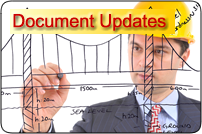Are you being asked to sign contracts that are prepared by the Owner? If so, do you have a policy in place to have each such contract, Master Agreement, or Statement of Work be reviewed by your attorney? You should. An ounce of caution is worth a pound of cure, as they say.
One of the most important contract terms to review in any contract is the indemnity provision. I’ve discussed how indemnity provisions work in the past. If you haven’t already read that post- do it now. (Go ahead, I’ll wait).
Today, I want to address indemnity in the context of non-form contracts presented to you by an Owner for execution. Generally these are presented with no expected negotiation on your part. Remember, however, that everything can be negotiated. A few small changes up front can save you lots of time and expense later if there is ever a lawsuit.
Because these contracts are drafted by the Owner (or, rather, his horribly biased zealous attorney), they tend to be overreaching and broad. Recent contracts I have reviewed ask the architect to indemnify the owner for the design team’s negligence, “regardless of whether or not other parties are also negligent.” That phrase is very troubling, and should be stricken. Otherwise, the Owner will have an argument that because the design team was negligent, they must indemnify the Owner for all negligent acts (other than the Owner’s own negligence), including those by other parties.
A better, proportional indemnification provision should include indemnification “to the extent the claim is found to be caused by the negligence of the design team.” (Even better, of course, would be a limitation of liability based on your design fees, but I recognize that it is often impossible to negotiate such a limitation with some blood-sucking sophisticated Owners.)
Do you have comments about indemnity provisions in contracts you have been asked to sign? Drop me a note in the comment section, below.
Photo via Creative Commons License.




